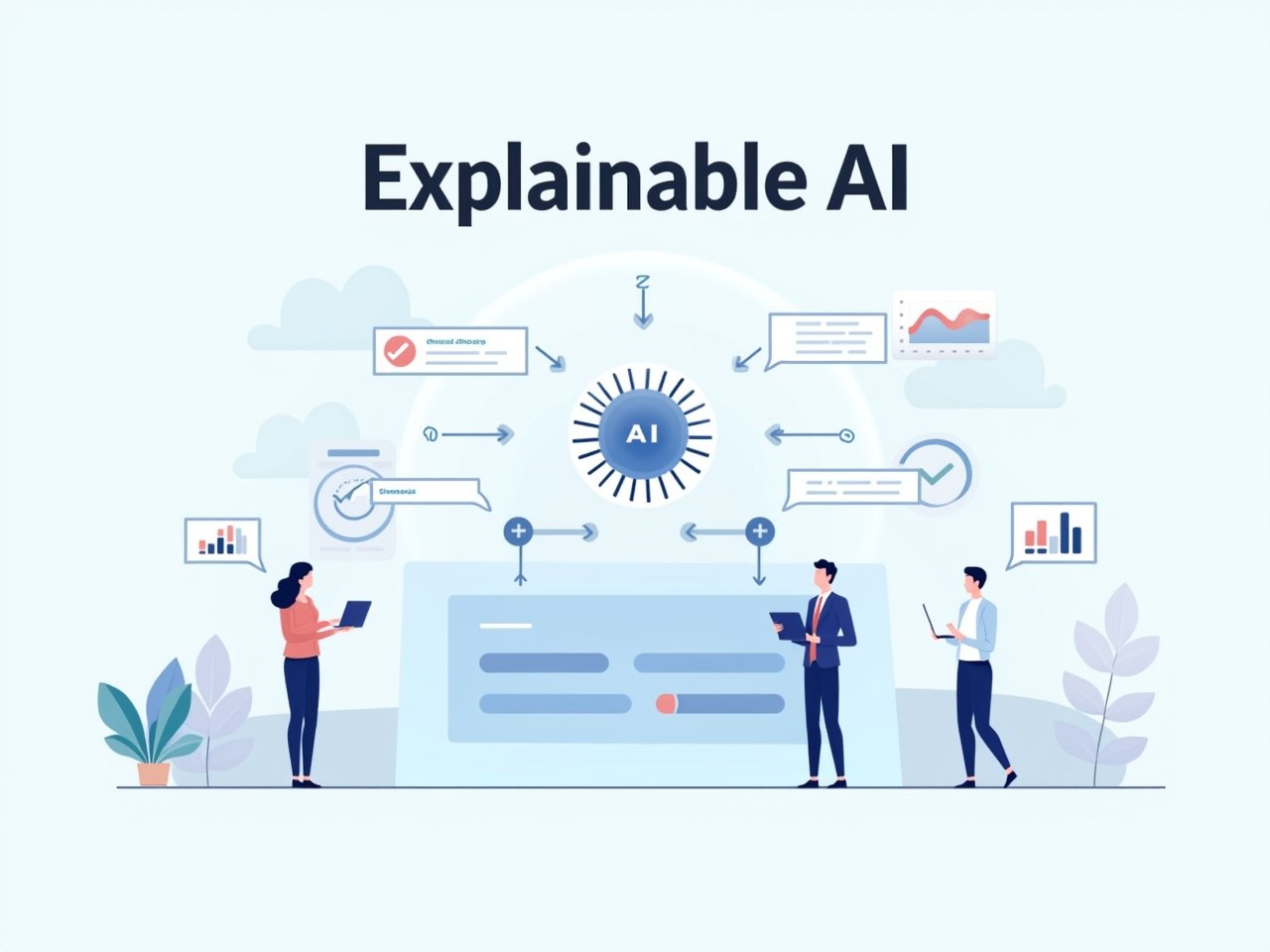Introduction
Artificial intelligence is no longer a futuristic concept—it’s now deeply woven into how businesses operate, make decisions, and serve customers. Explainable AI: Building Trustworthy Models for Enterprises is more than a technical goal—it’s a business necessity. However, with the increasing power of AI, its rise has also sparked a crucial concern: Can we trust what we don’t understand? That’s where Explainable AI (XAI) comes in.
XAI ensures that AI decisions are not just accurate but also understandable, enabling teams to trust, audit, and improve their models over time. This article provides a practical guide for enterprises seeking to implement XAI and develop AI systems that are transparent, reliable, and responsible.
Section 1: Understanding Explainable AI
What Is Explainable AI?
At its core, Explainable AI (XAI) refers to systems and models that offer human-understandable reasoning for their predictions or decisions. In contrast to “black box” models—where input goes in and output comes out without clarity—XAI makes the inner workings of AI accessible and interpretable.
Key Concepts to Know
- Transparency: The degree to which an AI model is open and understandable.
- Interpretability: The extent to which a human can comprehend the cause of a decision.
- Accountability: The ability to audit, question, or challenge an AI-driven outcome.
Traditional machine learning models like deep neural networks often lack transparency, making them risky in high-stakes environments like finance, healthcare, or law. Explainable AI: Building Trustworthy Models for Enterprises demands that we bridge this interpretability gap, especially in decision-critical domains.
Section 2: The Importance of Trust in AI
Why Trust Matters
Without trust, even the most accurate AI model becomes a liability. In enterprise settings, employees, stakeholders, and customers need to understand the “why” behind decisions, especially when outcomes affect real lives.
The Dangers of Black Box Models
- Bias and Discrimination: Unexplainable models have been shown to reflect or amplify bias. A 2018 case involving a U.S. court system used an algorithm that disproportionately penalized Black defendants due to opaque logic.
- Regulatory Risks: Industries like finance and healthcare are subject to regulations that require explainability in automated decisions.
- Reputation Damage: A wrong AI decision, if unexplained, can erode public trust and lead to PR crises.
Trustworthy AI models aren’t just about accuracy—they’re about accountability, fairness, and transparency.
Section 3: Key Techniques for Achieving Explainability
Popular XAI Methods
- LIME (Local Interpretable Model-Agnostic Explanations):
Explains the predictions of any classifier by approximating it locally with an interpretable model. - SHAP (SHapley Additive exPlanations):
Based on cooperative game theory, SHAP assigns an importance value to each feature contributing to a prediction. - Decision Trees:
Naturally interpretable due to their flowchart-like structure, making them ideal for rule-based decisions. - Partial Dependence Plots & Feature Importance Charts:
Visual tools to understand how different features influence the outcome.
Real-World Case Study
A major bank implemented SHAP in its loan approval model to better explain decisions to customers and regulators. This move not only increased customer trust but also helped the bank meet compliance standards more effectively.
Section 4: Implementing Explainable AI in Your Organization
A Step-by-Step Approach
- Assess the Risk Level of Your AI Applications:
High-risk systems (e.g., HR, finance) need greater explainability. - Choose the Right Models:
Prefer inherently interpretable models or use XAI layers for complex ones. - Integrate Tools like LIME/SHAP:
Embed them into your development and validation pipelines. - Set Metrics for Explainability:
Track not just accuracy but also how interpretable and fair your models are.
Best Practices
- Use diverse training datasets to reduce bias.
- Involve cross-functional teams, including compliance officers and business leads.
- Document your model assumptions and logic from the start.
Section 5: Overcoming Challenges in XAI Adoption
Common Barriers
- Lack of Expertise: Many teams are unfamiliar with XAI techniques.
- Time and Cost: Implementing explainability adds overhead to development.
- Cultural Resistance: Some organizations still prioritize performance over transparency.
How to Address Them
- Invest in training programs for your data teams.
- Use open-source libraries to reduce cost and implementation time.
- Foster a culture of ethical AI, where transparency is seen as a strength, not a burden.
Conclusion
The road to building enterprise-level AI is paved with innovation—but it must also be lined with trust. By embracing Explainable AI: Building Trustworthy Models for Enterprises, organizations can future-proof their technology, meet compliance needs, and, most importantly, build AI systems that humans can trust.
Now’s the time to evaluate your current AI systems. Are they transparent? Are they fair? Are they explainable? Start asking the right questions, and the answers will shape a better, more trustworthy AI future.







